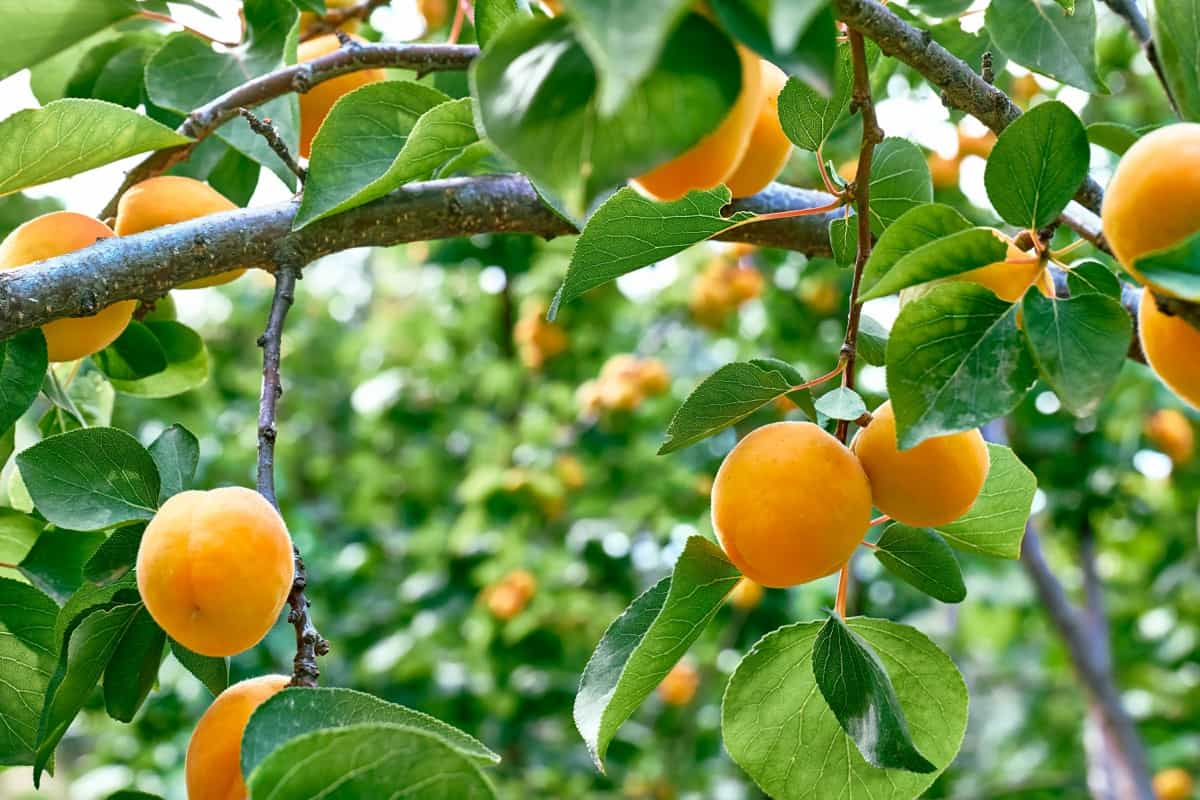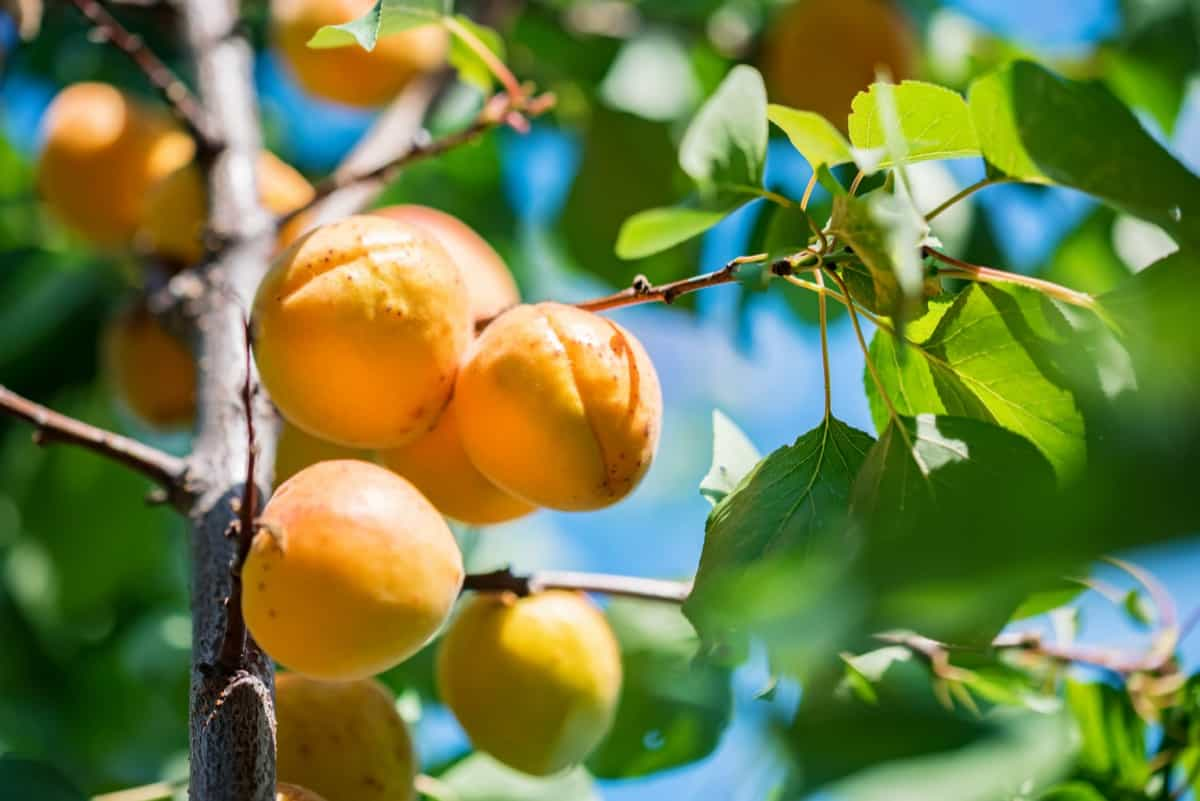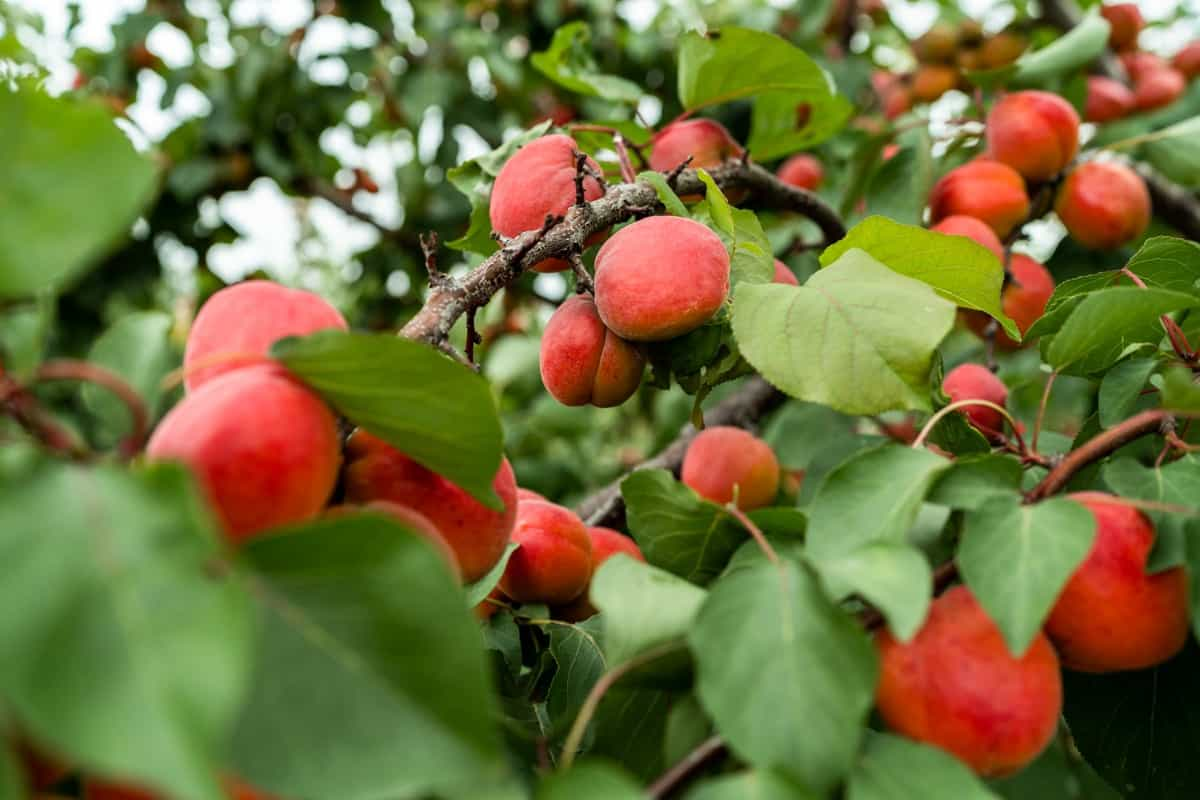Apricot trees are a valuable addition to any garden or orchard, providing delicious fruit and beautiful blossoms. Understanding the growing conditions for Apricot trees is crucial for their success. From selecting the right location with full sun exposure to ensuring well-drained soil, these factors significantly determine how well your tree will thrive.

By following these essential care practices – understanding growing conditions, employing proper planting techniques, utilizing effective pruning methods, and implementing fertilization strategies while keeping pests at bay – you’ll be rewarded with healthy Apricot trees that yield bountiful harvests season after season.
Essential Apricot Tree Care Practices
Prune Apricot Trees Regularly
Pruning is a vital practice for maintaining the health and productivity of Apricot trees. Regular pruning helps shape the tree, promote proper air circulation, and remove diseased branches. It also stimulates new growth and improves fruit production. Start by pruning your Apricot trees during their dormant period in late winter or early spring. Remove any crossed or crowded branches to create an open center that allows sunlight to reach all tree parts. This will help prevent diseases and ensure even fruit ripening. Avoid leaving stubs, which can invite pests or pathogens into the tree.
Water Apricot Trees Properly
Water is essential for the health and growth of Apricot trees. Proper watering ensures that the tree receives enough moisture without being overwatered, which can lead to root rot and other issues. When watering Apricot trees, there are a few key practices to remember. It’s important to water deeply and infrequently rather than shallowly and frequently.
A deep soak once or twice a week is generally sufficient. Be mindful of rainfall when determining how much water your Apricot tree needs. If there has been significant rain recently, you may not need to water as often. On the other hand, during drought or hot weather, you may need to increase your watering frequency.
Fertilize Apricot Trees Annually
Proper fertilization is crucial for the health and productivity of your Apricot trees. You can ensure their growth and development throughout the year by providing the necessary nutrients. When it comes to fertilizing Apricot trees, timing is everything. It’s best to apply fertilizer in early spring, just before new growth begins. Choose a balanced fertilizer specifically formulated for fruit trees. Look for one with equal nitrogen, phosphorus, and potassium (NPK). These three essential nutrients play different roles in plant growth.
Nitrogen promotes leafy green growth, phosphorus encourages root development, and potassium aids overall plant health. Apply the fertilizer around the tree’s base, but avoid placing it directly against the trunk. Use a spreader or your hands to distribute it over a wide area. Water thoroughly after application to help incorporate the nutrients into the soil. Follow package instructions carefully and avoid overfertilizing. Monitor your tree’s response to determine if additional applications are needed throughout the growing season.
Mulch Around Apricot Trees
Mulch is an essential practice for maintaining healthy Apricot trees. Applying organic mulch provides numerous benefits to the tree and its surrounding soil. Additionally, mulch is a barrier against weeds, preventing them from competing with the tree for nutrients and water. Furthermore, organic mulch slowly decomposes, enriching the soil with valuable nutrients.
In case you missed it: Apricot Orchard Planning: Site Selection, Soil Preparation, and Planting

This promotes healthier root growth and overall tree vigor. When applying mulch around your Apricot trees, leave a small gap between the trunk and the mulch layer to prevent moisture buildup that could lead to rot or disease.
Protect Apricot Trees from Pests and Diseases
Regarding Apricot tree care, one essential practice is protecting your trees from pesky pests and harmful diseases. These threats can weaken the trees, reduce fruit production, and even lead to their demise if left unchecked. Regularly inspect your Apricot trees for signs of infestation or disease to keep them healthy and thriving. Look out for common pests such as aphids, mites, and scale insects that can damage leaves and suck sap from the tree. If you spot any of these critters, take immediate action to control their population.
Organic pest control methods are one effective way to protect your Apricot trees. This includes introducing beneficial insects like ladybugs or lacewings that feed on aphids or using insecticidal soaps that are safe for the tree and the environment. In addition to pests, diseases can also threaten Apricot trees. Common conditions include brown rot, powdery mildew, and bacterial canker. To prevent these ailments from spreading, ensure proper sanitation practices such as promptly removing infected branches or fruits.
Thin Apricot Fruit for Proper Growth
Thinning Apricot fruit is a crucial practice that can greatly contribute to properly developing your Apricot trees. Removing excess fruit allows the remaining fruits to receive more nutrients, sunlight, and air circulation. This helps in preventing overcrowding and promotes healthier fruit production. To thin Apricot fruit, identify clusters or branches with excessive fruits. Gently remove some smaller or damaged fruits from these areas using pruning shears or your fingers. Aim for a spacing of about 4-6 inches between each remaining fruit to ensure they have enough room to grow.
Support Apricot Trees: Train them Properly
One important aspect of Apricot tree care is properly supporting and training the trees correctly. This not only helps in maintaining a healthy structure but also ensures better fruit production. It’s crucial to keep young Apricot trees by staking them securely. This helps prevent damage caused by strong winds or heavy fruits weighing down the branches. Use sturdy stakes placed firmly into the ground and tie the tree with soft ties that won’t cause any harm.
As your Apricot tree grows, it’s necessary to train its branches properly. Start by pruning away weak or crossing branches during winter when the tree is dormant. Aim for an open center shape, allowing sunlight and air circulation throughout the canopy. Use pruning shears or loppers to remove excessive growth and maintain a balanced structure. Avoid cutting too much at once as it can stress out the tree; instead, prune gradually over several seasons if needed.
Monitor Soil pH for Apricot Trees
The soil pH greatly influences the health and productivity of Apricot trees. The ideal pH range for Apricot trees is between 6.0 and 7.0, which ensures that the tree can absorb essential nutrients efficiently. Testing should be done at least once every few years to ensure optimal pH. If the soil pH is too low (acidic), it can cause nutrient deficiencies and stunted growth in Apricot trees. Conversely, if the soil is too alkaline (high pH), it may prevent proper nutrient absorption and result in yellowing leaves or other signs of poor health.
In case you missed it: 1-Acre Apricot Farming Project Report: Production Economics, Cost and Profit Analysis

Pruning Apricot Trees in Winter
Winter is the ideal time to prune Apricot trees, as they are dormant and less vulnerable to stress. Pruning helps maintain the health and shape of the tree, ensuring better fruit production in the coming season. Remove any dead or diseased branches. These can harbor pests and diseases that could spread to other parts of the tree. Use clean pruning tools to make clean cuts close to the branch collar. Next, thin out crowded areas by selectively removing some branches.
Avoid Over-Watering Apricot Trees
Over-watering can be just as detrimental to Apricot trees as under-watering. While it’s important to provide adequate moisture for your trees, excessive watering can lead to root rot and other issues that can ultimately harm the health of your Apricot tree. One way to prevent over-watering is by monitoring the soil moisture levels regularly. Additionally, ensure you’re using well-drained soil that allows excess water to flow away from the roots. This will help prevent waterlogged conditions that can suffocate the roots and promote fungal diseases.
Frequently Asked Questions on Apricot Tree Care Practices
How Often Should I Water My Apricot Tree?
Watering frequency for Apricot trees depends on several factors, such as weather, soil type, and tree age. Generally, young trees require more frequent watering to establish their root systems.
When is the Best Time to Prune an Apricot Tree?
The ideal time to prune an Apricot tree is during late winter or early spring while it’s still dormant. This allows for optimal healing and reduces the risk of disease transmission through open wounds. Pruning helps shape the tree, remove dead wood, improve airflow and sunlight penetration, and stimulate new growth.
Do I Need to Hand-pollinate My Apricot Trees?
While some varieties are self-pollinating (meaning they can produce fruits without cross-pollination), most Apricots benefit from cross-pollination by bees or other insects. Planting multiple compatible varieties will increase the chances of successful pollination and higher yields.
In case you missed it: Apricot Tree Fertilizer Requirements: Recommendation, How and When to Apply

Conclusion
Taking care of your Apricot trees is essential for their health and productivity. By implementing these essential care practices, you can enjoy healthy Apricot trees that reward you with abundant yields season after season. So, roll up your sleeves, wear those gardening gloves, and give your beloved Apricots the attention they deserve.
- Feed Your Flock for Less: Top 10 Tips to Save on Chicken Feed
- Ultimate Guide to Ossabaw Island Hog: Breeding, Raising, Diet, and Care
- Hatching Answers: The Top 10 Reasons Your Chickens Aren’t Laying Eggs
- Eggs and Economics: Breaking Down the Cost of Raising Backyard Chickens
- Defend Your Greens: Proven Methods to Keep Iguanas Out of Your Garden
- Ultimate Guide to Cinnamon Queen Chicken: A Comprehensive Guide for Beginners
- Ultimate Guide to California Tan Chicken: Breeding, Raising, Diet, Egg-Production and Care
- Ultimate Guide to Marsh Daisy Chicken: Breeding, Raising, Diet, and Care
- 10 Types of Chicken Farming Businesses You Can Start for Profits